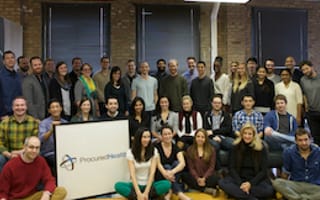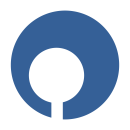The opportunity to change the way the world operates remains a big draw for many people who decide to get into technology — and there’s no shortage of problems to solve.
From skyrocketing healthcare costs and the complexity of the United States’ immigration system to the costs employers face when bringing on new employees, Chicago’s developers are taking on some of our economy’s biggest challenges. We asked them what they’re working on, and how their innovations are making a difference.

Working with some of the country’s most prestigious healthcare systems, Procured Health leverages data analytics to reduce wasteful spending in the healthcare sector and focus its limited resources on equipment and interventions with proven track records. (Update: Procured Health is now Lumere.)
Answers from Will Danford, chief technology officer.
What is the biggest problem your developers are working to solve?
At Procured, the entire company is focused on one thing — reducing the cost of medical care while simultaneously improving patient outcomes. We think it’s one of the thorniest problems to go after in the U.S., where suboptimal decisions on medical devices contribute to $35 billion in annual overspend.
We spend more than any other country in the world on healthcare, yet rank 37th in outcomes. One of the reasons is that device companies charge hospitals more than 400 percent their cost of production on average. That's a lot of savings up for grabs that could benefit hospitals and patients. By improving the information that healthcare providers use to make decisions about these products, we can make a huge difference.
What is the most innovative thing about how the problem is being solved?
There’s a ton of healthcare data out there waiting to be leveraged in support of our mission. Modern data-processing techniques like machine learning can be used to identify patterns in that data — helping us understand the common causes of medical device failure, for example. Our software makes it possible for hospitals to apply this sort of clinical knowledge to their sourcing decisions, improving care delivery while lowering costs. It's a problem that used to be solved by expensive consultants — now hospitals can do it themselves.

Training employees is one of the biggest challenges any knowledge-centered company faces. With its fresh approach to learning, mLevel helps employees get up to speed more quickly, measuring their progress along the way.
Answers via Chris Balcer, director of technology.
What is the biggest problem your developers are working to solve?
One of the biggest problems that the engineers at mLevel are trying to solve hinges around the ability to continue to evolve and yet maintain a monolithic platform with a small team. The mLevel platform consists of several large-scale, enterprise-ready components that all integrate together to provide a seamless experience to learners, educators and admins alike. Thus, an issue of data synchronization and movement across the platform has definitely been the most significant challenge for our engineering team to tackle as the system continues to grow in popularity.
What is the most innovative thing about how the problem is being solved?
mLevel is leveraging Microsoft Azure to dig into the data synchronization issues that have been encountered while we continue to evolve the platform. Specifically, by using some of the newer technologies on Azure such as web jobs processing events in Event Hubs, the team has been able to offload some of the synchronous processes which had become inadvertent bottlenecks in our system in the past. We continue to evolve the way to capture data during user interaction to streamline the approach further by removing some unnecessary threads in favor of a more direct approach to data storage and manipulation.

The process for immigrating to the United States is mind-bogglingly complex and surprisingly reliant on physical paperwork. VISANOW uses technology to help streamline the application process, helping companies bring in the talent they need to grow their businesses.
Answers from Mahi Inampudi, VP of product and technology.
What is the biggest problem your developers are working to solve?
The biggest problem we’re trying to solve is simplifying and modernizing the immigration process for employers. Immigration is tough enough; we aim to make it seamless for companies to hire and manage a global workforce.
What is the most innovative thing about how the problem is being solved?
Using our research into the user experience, we’ve built an immigration management platform for companies leveraging inbound and outbound international talent. Its features include organization and collaboration modules that help manage information complexity and allow businesses to manage their international workforce around the world from one intuitive online platform.

Between the inconvenient office hours and all the other things going on, getting a new eyewear prescription can often end up sliding down on the priority list. Opternative's online exam makes the process of getting new glasses a lot more convenient.
Answers via Ayo Jimoh, CTO, and Derek Schaefer, lead engineer.
What is the biggest problem your developers are working to solve?
Since launch, we've amassed an immense amount of industry and domain knowledge. We now have the challenge of synthesizing this information into our engineering and product strategy. Specifically, we're in the process of rebuilding our online exam platform to support the needs of new distribution channels and players in the industry, all while reducing complexity and making it easy for new engineers to contribute.
What is the most innovative thing about how the problem is being solved?
The most innovative thing about our approach is we're engaging doctors, retail partners and other stakeholders to implement never before seen exam experiences. This effort also provides us with the opportunity to create a standard for how vision care data is transmitted between different systems in the industry. Existing systems for this purpose are insufficient or non-existent, which is allowing us to pave the way for how information is shared within the ecosystem.
Images via listed companies.
Have a tip for us? Shoot us an email or follow us on Twitter @BuiltInChicago.








